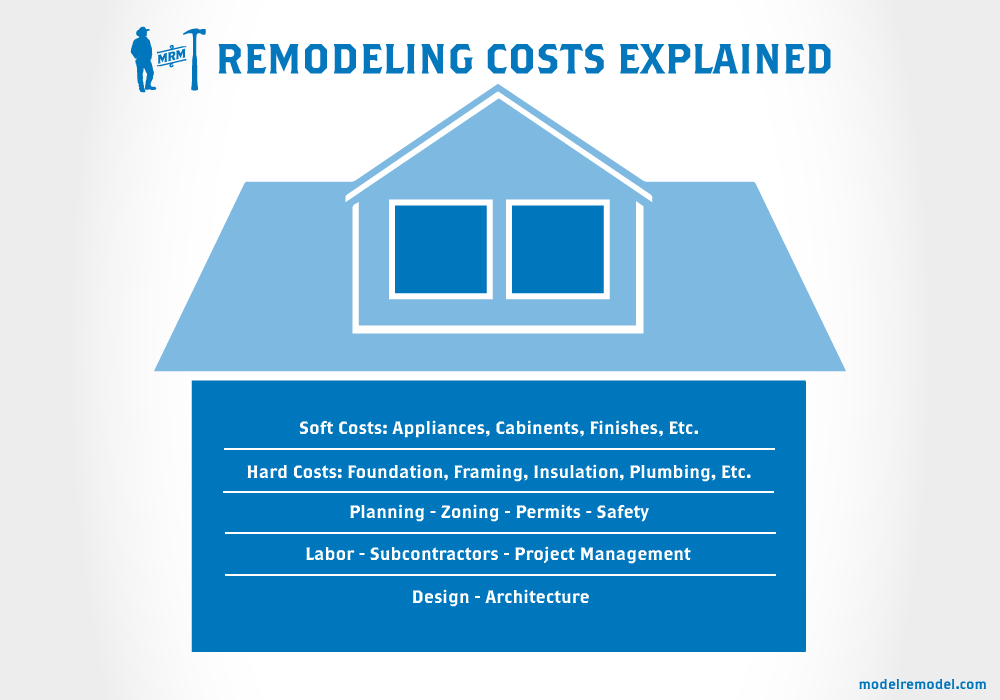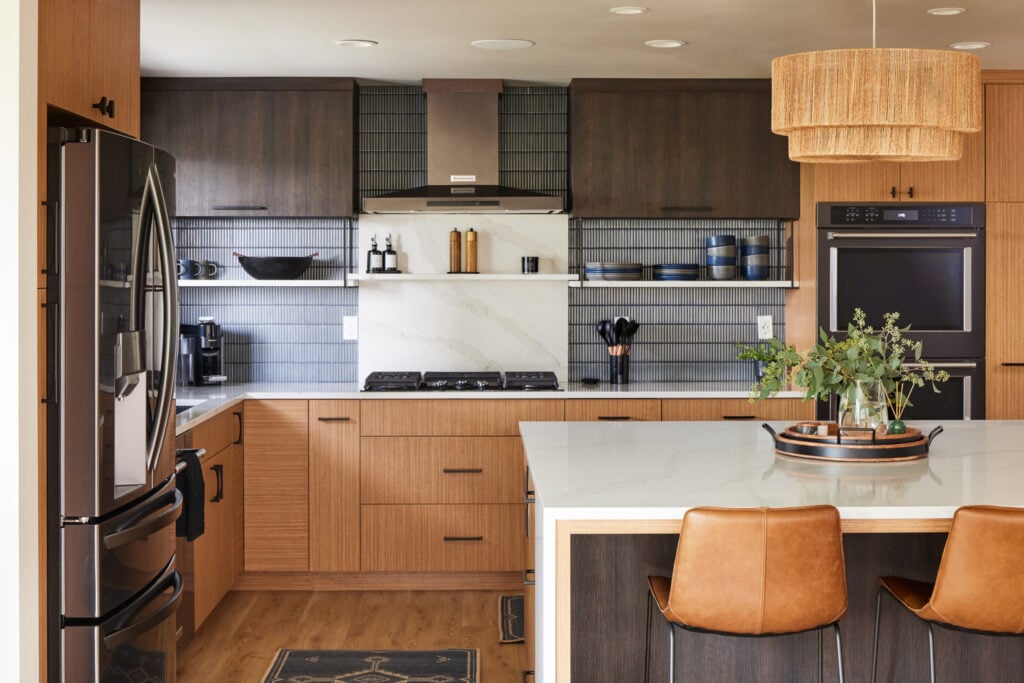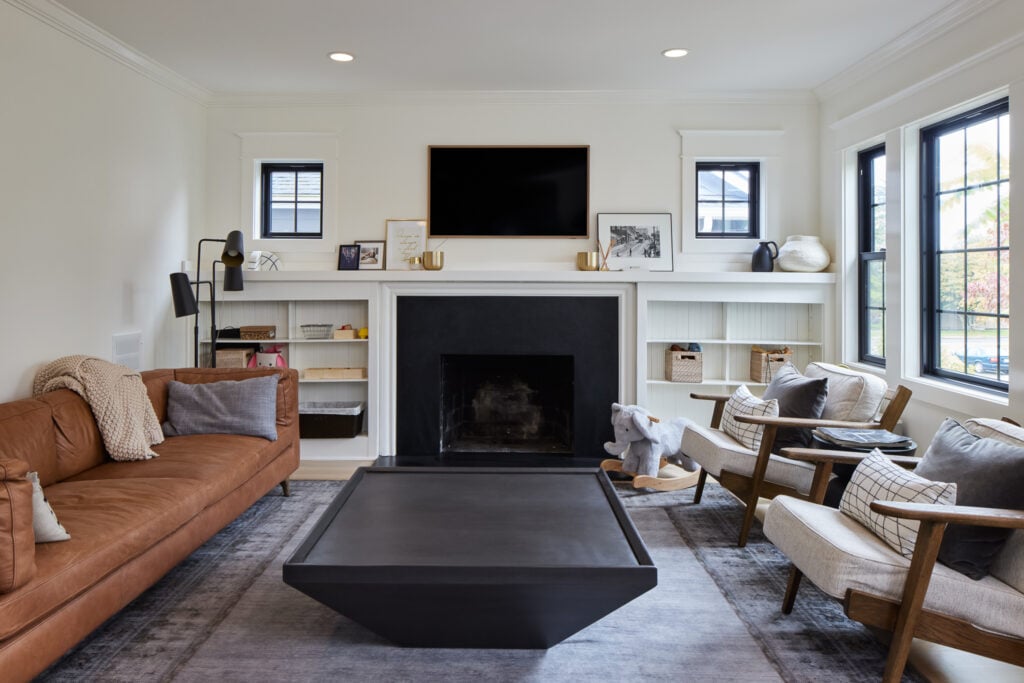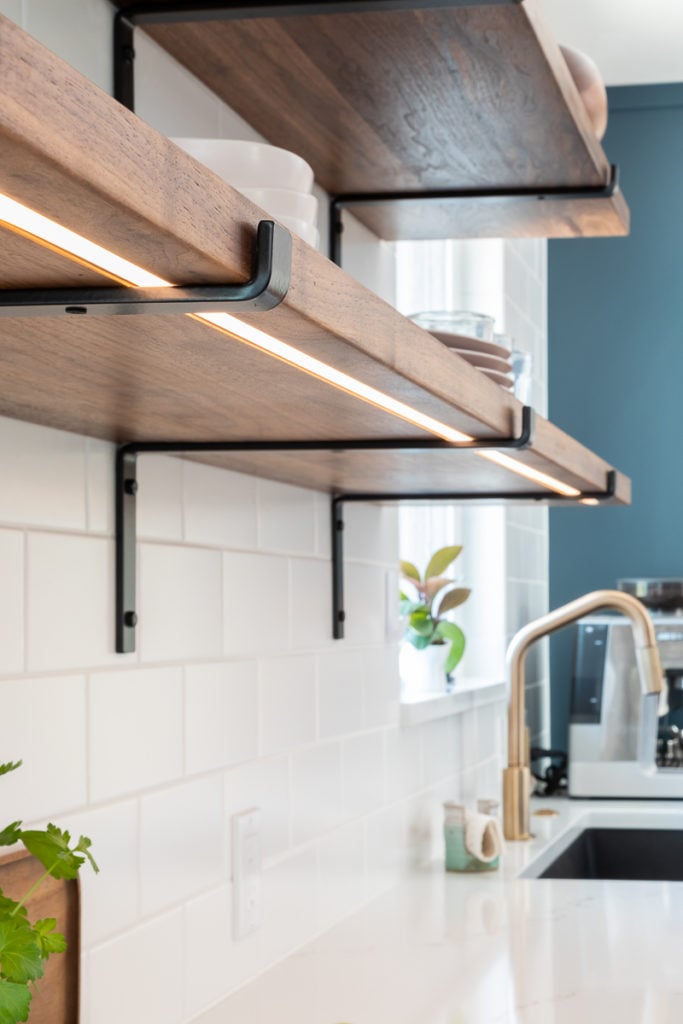
It’s the first thing you research, the first thing you ask a contractor, but the last thing you really want to talk about: cost. It’s not a glamorous topic, but a necessary one when considering a remodel. Yet, setting a realistic remodeling budget isn’t an easy task. Most homeowners simply don’t know where to start. Others have heard about a bad experience and are rightly skeptical of being taken advantage of. To help homeowners with this process, we’ve described what drives the costs of remodeling and how to look at the numbers in a pragmatic way. You won’t see any hard numbers below, as any general contractor would be remiss to give you a number without understanding the scope of work and your reasons for remodeling. The advice we give is meant to help you determine your personal budget.
Reasons for Remodeling
You have your reasons for wanting to do a remodel and your neighbor has his/her own as well. The reason may seem inconsequential to budget, but below we look at three different reasons for remodeling and how it affects your budget.
1. “I want to build my dream home.”
You’re looking for long-term solutions that fit your personal needs. You’ll spring more for the custom built-ins to house your library collection and the steam shower you don’t know how you ever lived without. Maybe you don’t spend much time in the bathroom, but you love to cook. You’re going to upgrade the kitchen and knock down a wall to create your perfect open floor plan. The structural changes, high-end appliances and labor come at a cost, but you can’t put a price tag on pure bliss can you?
2. “I want to make room for our growing family.”
You’ve got a baby on the way and a timeline that is not negotiable. With very little room for changes or delays, you’ll compromise in some ways and be very strict in others. You’ll forgo the fancy shower door that takes 3 months to ship, but you’ll absolutely remodel the basement into a new, safe playroom for the little ones. You won’t worry about the price of carpet because you’ll spring for one that is stain-resistant and plush. You’ll spend more on labor so the job can be completed before you bring home your newborn.
3. “I want to increase my resale value.”
With this goal in mind, you might focus your budget on creating curb appeal with a new, grand front deck or nano doors. You’ll also focus attention to the areas of the house that tend to be the “selling points” for buyers, like the kitchen and a master suite. Instead of choosing custom cabinetry that you love, you’ll probably go with a more timeless look that will save some dollars, but you’ll spring for the trendy farmhouse-style sink. You will spend more for these upgrades, knowing that brand new appliances and finishes will up the value of your home significantly. There’s a reason they say ‘you’ve got to spend money to make money’.
These are just a few examples of reasons for remodeling, but you can already see how your choices and goals affect the scope and budget.
This Houzz article does a great job of explaining how job scope may vary and affect the budget of a kitchen remodel. Many people fall into that secondary range, $40,000 to $75,000, because they want to change the layout of their kitchen or build custom solutions for the space. If you’re already putting in the time, effort and dollars to do a remodel, it’s not crazy to save up in order to design the kitchen of your dreams. Those sorts of fine details can add up quickly, though.
Regardless of the reason, the theme is the same: you’ll have to understand the costs and be willing to make compromises if something isn’t a priority to your goal.

Remodeling Costs
The three biggest costs of the majority of remodels are: labor, subcontractors and materials. You likely need to hire a professional because the work isn’t within your home improvement spectrum. You also want to hire a professional for your own sanity—DIY remodels are technical and hard work. Remodeling is a skill that carpenters and crews perfect over years of projects.
A good contractor will have the correct licenses and insurance, and require the same from their subcontractors. A great contractor will listen to your needs, help you find customized solutions, and be your partner throughout the entire remodeling process. Established, general contracting companies with years of experience and rave reviews will cost more than a one-man show or startup, but built into that price is some assurance that you’re in for a job well done. An established contractor will also take care of you if a warranty issue should arise. Construction labor isn’t the only labor cost you’ll incur. Spending money up-front on a knowledgeable designer or architect can save you big dollars down the road. As a Seattle-based, design-build company we see first hand the value of having a designer who understands construction costs and can create a design that will realistically fit within your investment range.
Another cost is subcontractors. Few companies have a crew that includes plumbers, electricians, tile setters, and other special fields—no man is an island. There are many specialties that are best handled by subcontractors who have exact and absolute knowledge of their discipline. These subcontractors may be seen as an additional line item, but rest easy knowing that the right person is doing the job. Reputable general contractors will have a long list of subcontractors to choose from and will have already properly vetted those people, or worked with them on previous projects. Subcontractors should meld seamlessly into the rest of the crew and work environment when they are needed.
Materials are also a huge consideration. Granite vs marble, plastic vs stainless steel, carpet vs hardwood… when it comes to design (soft costs) the options are endless and the sky is the limit. There’s also the less-glamorous, hard costs like: concrete, insulation, and electrical work. These are required for every project and they cost money too. Proper framing and structures need to be the foundation, pun intended, for your beautiful floors and fixtures. While these hard costs are less negotiable, soft costs are all up to you. Keep in mind that the two are correlated, so being aware of the “20 to 29% rule” is in your best interest.
There are plenty of other things that can alter your budget, but thinking about these three main components and avoiding budget busters will keep your remodeling costs in check.
Setting Your Realistic Budget
“But I saw a remodel on HGTV for $30,000, why does it cost twice that?” Let’s address this question right off the bat. HGTV can offset certain costs that the average person cannot. Materials and labor may be donated in exchange for public relations, the designer fee may be waived, and they likely have discounts and resources not available to the public. They can also bring 10 people in to complete a job that would normally require 3, so the job gets done in a quarter of the actual time it would take. You simply can’t compare your remodel to what you see on TV, what your best friend in a different city told you, or what you paid 5 years ago. Setting a realistic remodeling budget is best handled as a conversation with your local contractor, as no two project budgets are ever alike—we wish they were that easy too!
That being said, have a budget in mind going in. You know how much money you have and how much wiggle room you can give yourself. One of the best things you can do is set hard limits from the get-go. While you don’t have to tell anyone about your cap (the absolute most you can possibly spend), you should be willing to share your rough budget with a contractor so they can give you an estimate that fits within that budget. As a general rule, expect 15-20% of your budget to go to contingencies that come up during the project. If your contractor is experienced at estimating, you won’t need all of it, but remodeling can be tricky when bringing things up to code. You don’t always know what you’ll find during demolition. Having a list of priorities is also helpful for both you and your contractor to keep thinking “big picture.”
As a Seattle, design-build company, we know what things relatively cost and we’re used to talking numbers. For many clients, talking about their remodeling budget doesn’t come as naturally. Unless you don’t mind spending countless hours researching prices, it’s best to find a contractor you trust to find options within your scope and budget. They won’t give you a number off the top of their heads, as they know as well as we do that no two projects are alike. Be honest and realistic from the start and you’ll be living in your ideal home in no time.






